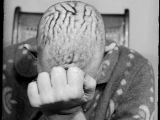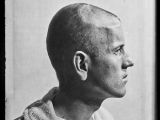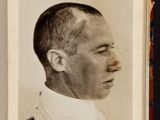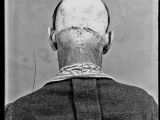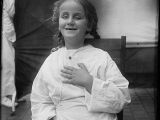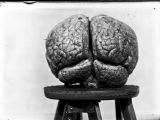Until about 120 years ago, brain surgery was more like butchery and surgeons of the time were all too aware of it. Hence the fact that very few dared crack open people's skulls to have a look inside and try to fix an obvious problem.
When they did, things almost never went smoothly. In fact, medical records speak of mortality rates of about 60 to 70%. So, yes, these were dark times for surgeons and their patients.
Then Harvey Williams Cushing came along
In the early 20th century, American neurosurgeon Harvey Williams Cushing developed several new and quite innovative surgical techniques for operating on the brain and forever transformed surgery.
Recently, the Cushing Center at the Yale School of Medicine released photos of Dr. Harvey Cushing's patients, together with views of some of the brains in the neurosurgeon's collection.
Apparently, Dr. Harvey Cushing was so fascinated - some might even say obsessed - with his work that, during his career, he gathered about 1,000 brains, all willingly donated by his patients, and some 10,000 photos of the people he treated.
You can find some of these black-and-white photos in the gallery below. Fair warning, chances are you'll find them horrifying, if not downright macabre. Not that you could help it.
Let's face it, these early patients of Harvey Cushing weren't exactly good looking when they came out of surgery. Still, this does not change the fact that, simply because they didn't die on the operating table, they count as success stories.
True, aesthetics wasn't Dr. Harvey Chushing's forte. Then again, the surgical techniques he came up with brought mortality rates in brain surgery down to just 10%, so let's give credit where credit is due.
How a few very simple ideas can go a long way
The human brain packs about 600 kilometers (373 miles) of blood vessels that feed it 1 liter of blood per minute. The scalp and the skull are crisscrossed by myriads of blood vessels too.
For this very simple reason, the majority of early brain surgery patients bled out on the operating table long before their surgeons could even figure out what was off inside their brain and correct the problem.
In a matter-of-fact kind of way, Harvey Cushing didn't try for some grand solution to this problem. He simply started using miniature clips made from wire to stop blood flow in veins and arteries.
He also made a tourniquet of sorts from a pneumatic cuff normally used to measure blood pressure to reduce blood flow to the brain. Patients began losing less blood and so operating on the brain was no longer an impossible endeavor.
His work gave other surgeons the confidence to go ahead and open the skull and poke around inside the human brain. In this day and age, once unimaginable brain surgery is pretty much routine.

 14 DAY TRIAL //
14 DAY TRIAL // 
